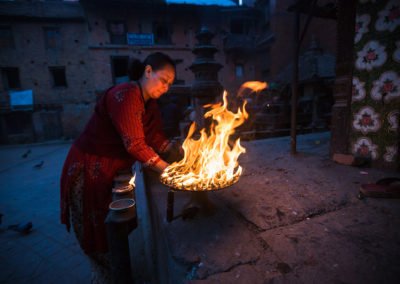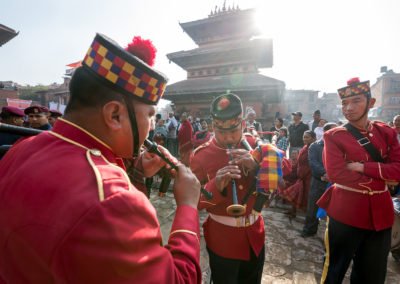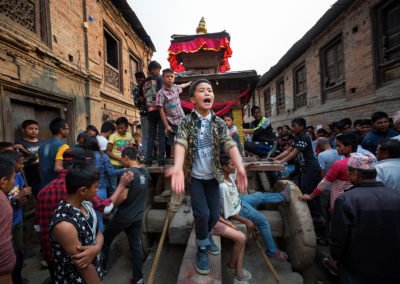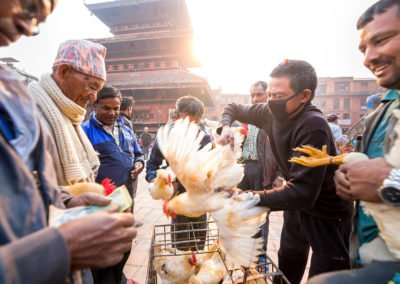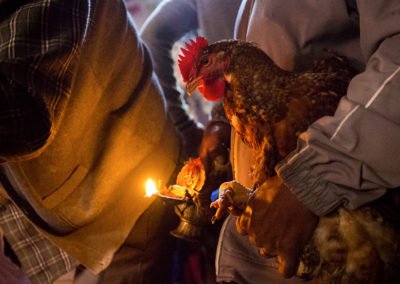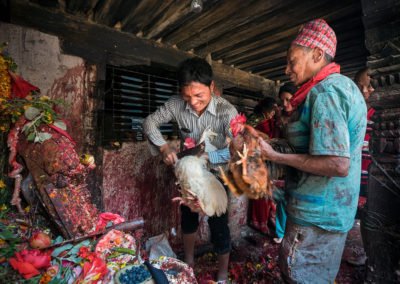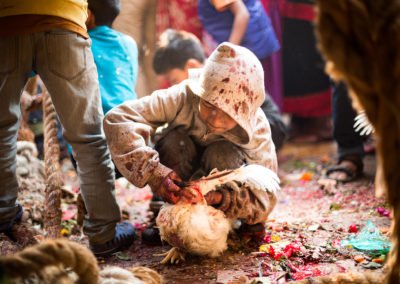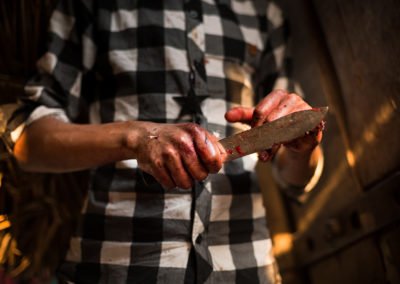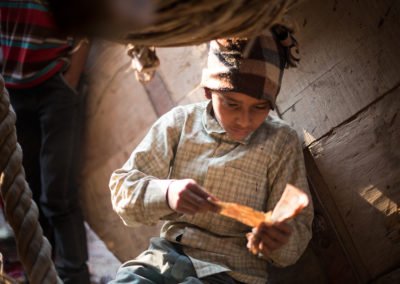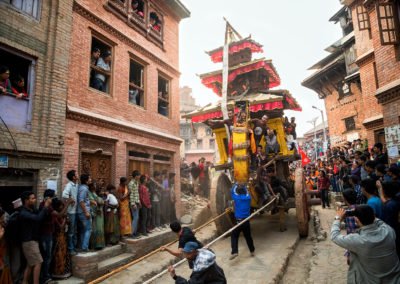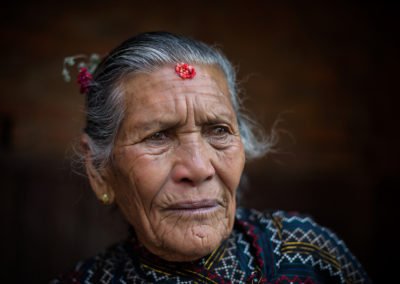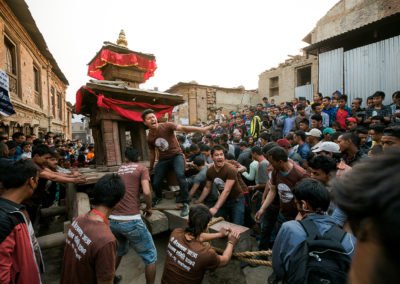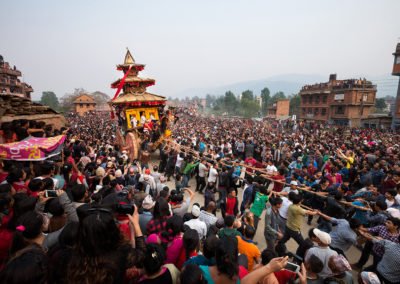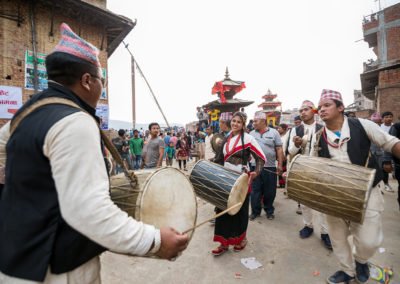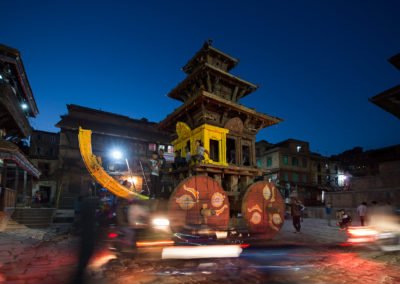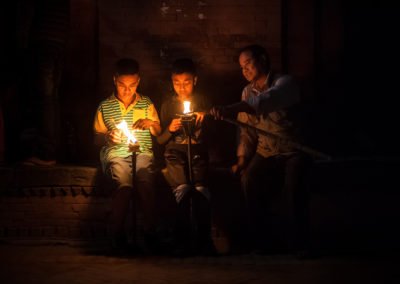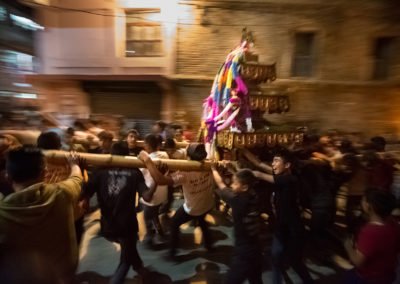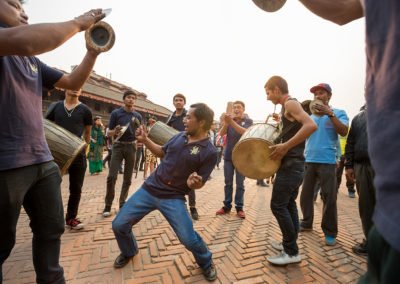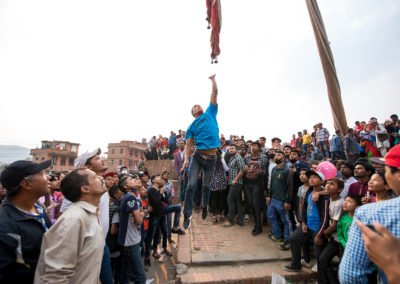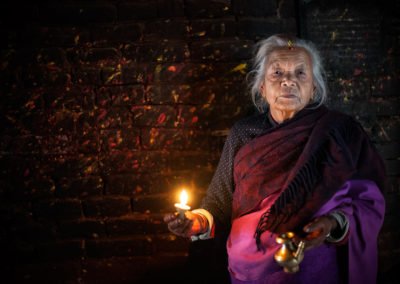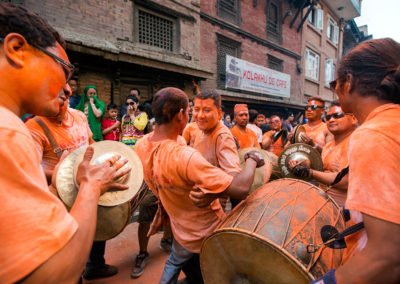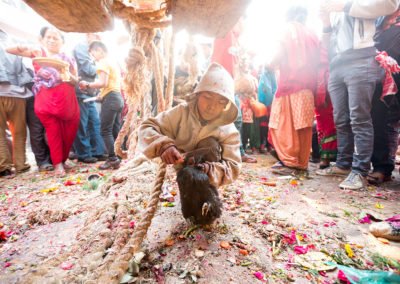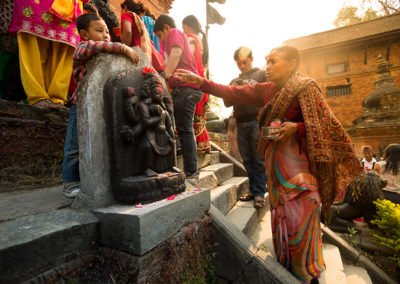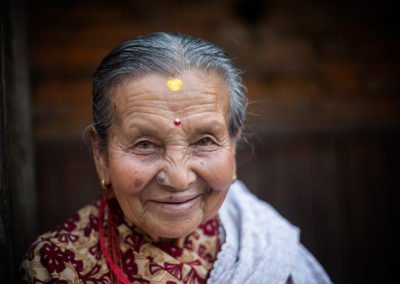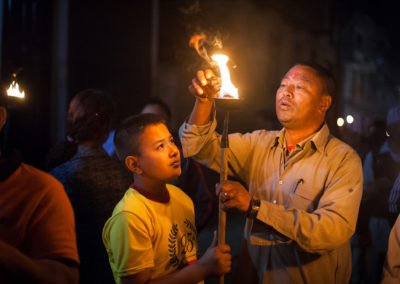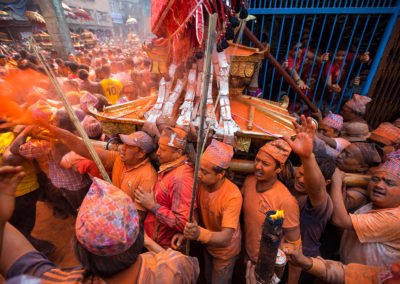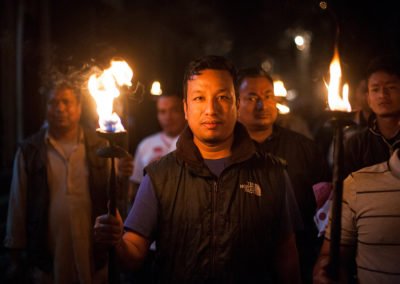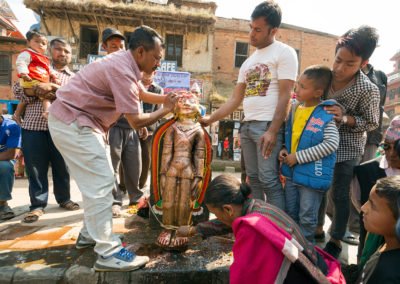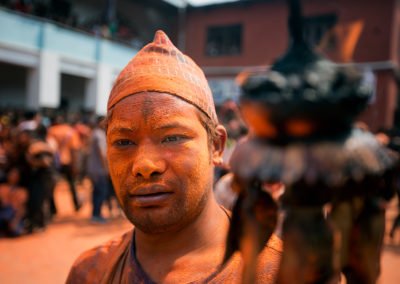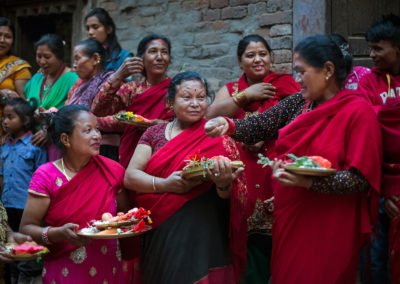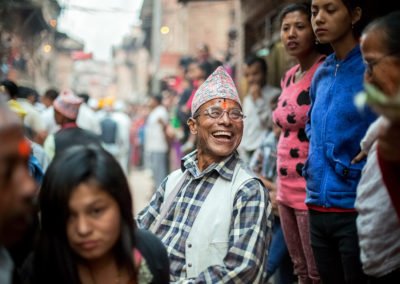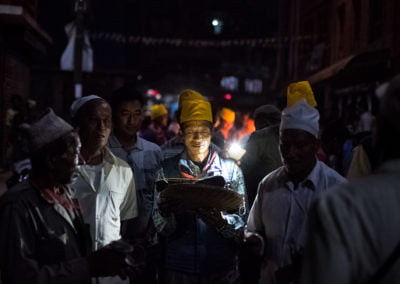NEPAL – BISKET JATRA
Biska Jatra, is an annual event in Bhaktapur, Dhapasi, Madhyapur Thimi and Tokha and other places in Nepal. The festival is celebrated at the start of the new year on the Bikram Sambat calendar, however, the festival itself is not related to Bikram Sambat. The festival welcomes one and all in and around Bhaktapur and beyond its boundaries.
The famous festival, which is observed for eight nights and nine days, as per historical records it has been marked since the Lichchhivi era (c. 450-c. 750). The Jatra started worshiping Bhairabi temple nearby Paanchtale temple in Naumadi.
Legend has it that this celebration is the “festival after the death of the serpent.” Prominently observed at the advent of spring, it is a festival of human emotions that are symbolically depicted through the multiple aspects of the festival. The central point of folklore, as it goes, is about the slaughtering of a pair of snakes by a handsome young man bestowed with tantric powers. It is said that the two serpents came out of the nostrils of a beautiful princess when she sneezed at midnight. In the twinkling of an eye, they transformed into huge serpents. When they were about to strike the young man, he killed them, using his tantric powers.
Many areas of Bhaktapur city celebrate this festival as per their own ritual. The most eventful places during the festival are, Bhaktapur Durbar Square and Thimi Balkumari. An immense chariot carrying a statue of God Bhairava is pulled by hundreds of people to the Khalna Tole. The most spectacular event on Bhaktapur Durbar square is a huge tug-of-war between the eastern and western part of town. Each team tries to pull to their side but later the chariot heads toward Khalna Tole. A huge approximately 25 meters Yohsi (male genital) is erected in the stone called yoni (female genital) base. In the evening of New Year, the Yohsi is pulled down as the New Year officially commences. The Bisket Jatra marks a cultural ecstasy in Bhaktapur.

